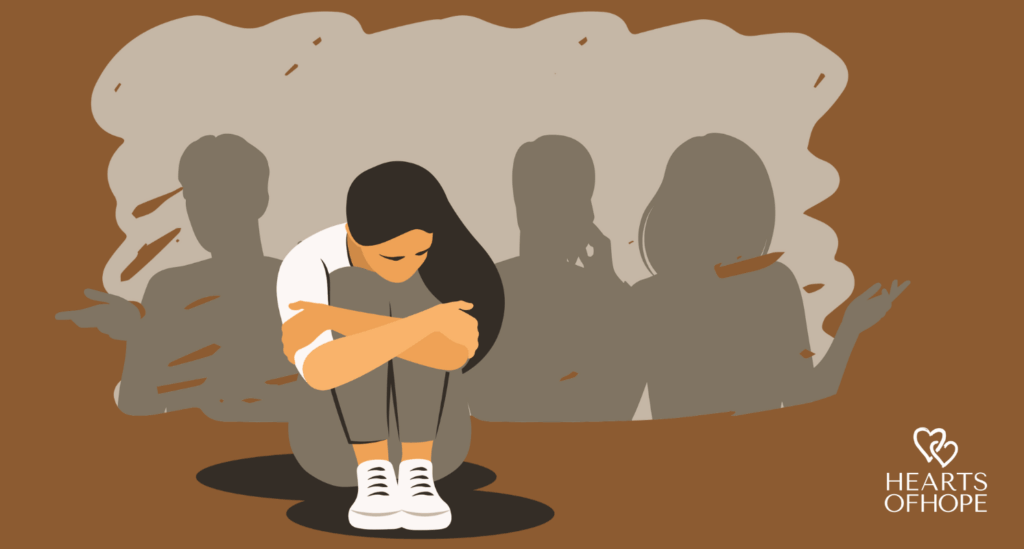The Myth of a Grief Timeline

Does grief really end in one year?
How long does it take to “get over” grief?
Everyone who has gone through a loss knows that is an impossible question to answer. You might feel most of your grief before an ill grandparent dies, or the grief of being estranged from a parent might not hit you until years after the loss. There are so many different factors that impact when and how long we grieve.
But the myth that grief has a timeline still persists. It’s a myth that we hear when a coworker asks why we’re still so sad, or we feel when we see a friend get a new pet after their dog has died. There’s a social expectation that grief over the most significant losses—a spouse, a child, a best friend—ends in a year. Other relationships and losses are “supposed to” take even less time.
In some ways, the myth of the grief timeline is baked into societal norms around bereavement leave and funeral service timelines. But it’s also natural to seek out some kind of standard. Grief is hard, and it would be nice to know exactly how long all the pain and surprise emotions will last.
In this post, we’ll explain the myth of the grief timeline, establish more accurate expectations for a grief journey, and highlight some of the signs of progress to look out for—on nobody’s timeline but your own.
Where does the idea of a grief timeline come from?
You have probably heard the phrase that “time heals all wounds.” You’ve probably also heard of the five stages of grief. It’s not that these concepts don’t have some truth to them, but they are now so steeped in our shared understanding of grief that they’ve become oversimplified. Grief does change over time, in ways that make day-to-day life more manageable. We also tend to experience different versions of grief, including periods of anger and denial.
But that doesn’t mean grief is linear. It doesn’t go from bad to better, with no deviations in between. Our common language about grief implies that there’s some kind of logic or formula to how long it lasts, and that simply isn’t the case.
In modern American society, we also don’t follow customs that acknowledge the longevity of grief. Many religions and cultures from around the world honor death anniversaries, or hold special rituals one year after a loved one’s death. But in general, our collective mourning practices don’t go beyond a funeral or memorial service within the first few weeks of a death. We rarely have more than a few days off from work, and then we “move on” with no ritual to acknowledge that grief continues.
How long does grief really take?
In a Vice article, grief expert and author David Kessler said, “The general population has this myth that in the first months or the first year, you grieve and then you’re done. That isn’t how grief actually works. Early grief for me, and what I teach, is the first two years.”
Kessler specifies that those first two years are just what he defines as early grief. Grief as a whole can last much longer. For many of us, it’s helpful to have expectations about the length of time our pain will last. It’s wired in our brains to make sense of and try to understand a chaotic world. But the best answer to the question, how long does grief last, is also the most frustrating: it depends.
There are countless factors that affect the way you grieve and how long you grieve. When a loss is particularly close or traumatic, many people experience a long period of shock and denial. Our brains literally cannot process that someone so close to us is gone. In those cases, people might not even begin to cry, feel emotions, or miss the person they’ve lost for months. The initial shock is a natural part of a grief process, but it can look like a delay to how we normally picture grief.
It’s important to remind yourself that grief is a natural response to a serious change in your life. Whether you’re in a fog for two years or don’t start crying until one year after your loss, your grief journey is unique to you. Instead of worrying whether your grief is following a prescribed timeline, pay attention to whether you are giving space for your feelings. As long as you don’t try to bury your grief, the time the process takes is the right amount of time.
How to know you’re healing
It is possible to get stuck in grief. Mental health experts call this prolonged grief disorder, which is when persistent symptoms of grief continue to interfere with your daily life one year after your loss. This isn’t to say you should be over your loss in a year. It’s just that grief ebbs and flows in different forms. If you are experiencing the same feelings at the same intensity, it may be time to seek extra support.
Here are some of the signs that you are processing your grief:
- You are able to maintain relatively healthy sleeping habits. When you have a difficult period and your sleep is disrupted, you have ways to get back into a restful routine.
- Your thoughts are no longer as obsessive or hyper-fixated as they once were. It’s common that thoughts of our loved one or of death in general can overwhelm us while we grieve. When that kind of thinking begins to relax and you have mental space for other ideas, it’s a sign of moving forward and regaining a sense of purpose.
- You feel joy and pleasure in some aspects of your life, even in small ways. These glimmers are evidence that happiness is possible, someday.
- You notice more consistent energy levels. When grief is at its most intense, you might feel lethargic or highly charged. If your energy begins to even out, your body is starting to accommodate the emotional toll of loss.
Every single person experiences grief at some point, yet there are many myths about grief that make it hard to know if what you’re feeling is normal. Remember, grief doesn’t have a timeline. It is a process with many shades and variations. Expanding our understanding of grief helps debunk some of the persistent myths about and gives us room to better support each other in each of our journeys.
Photo courtesy of Unsplash



